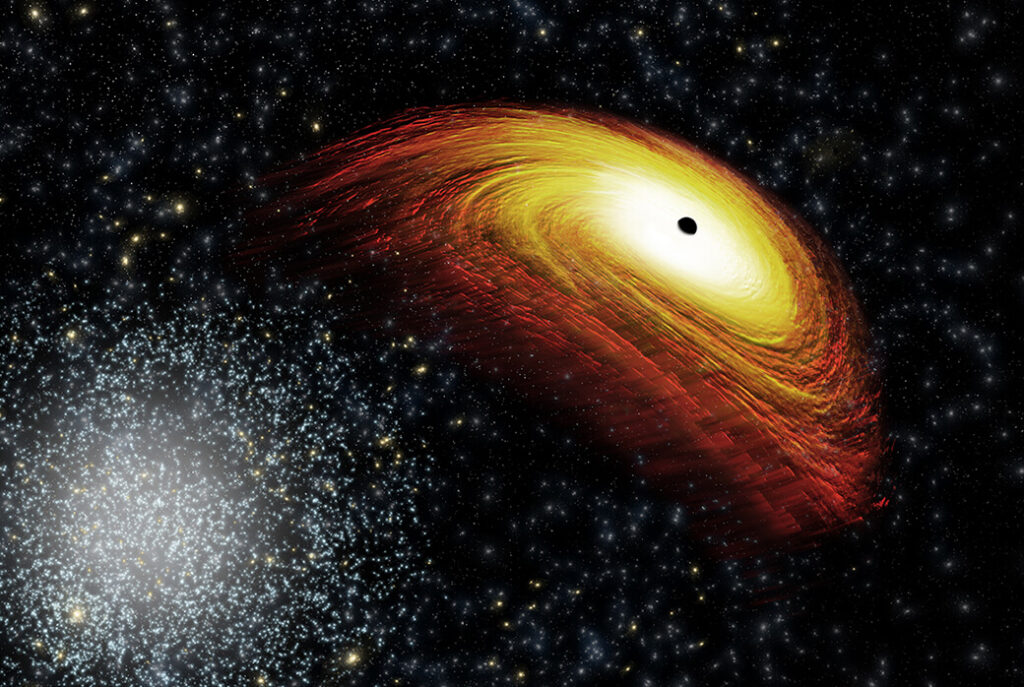Peering into the Darkness: Why Black Holes Are the Universe’s Most Profound Teachers

Credit: NASA/CXC/M.Weiss
In a universe filled with dazzling stars, radiant galaxies, and swirling nebulae, it is the darkest of all celestial entities that captures our deepest curiosity: black holes. They are, paradoxically, both invisible and some of the brightest objects in the cosmos. They defy everyday understanding, challenge our physical theories, and yet remain among the most studied and surprisingly simple constructs in astrophysics.
What makes black holes so captivating isn’t just their mystery, but their clarity. At their core, black holes are governed by just two observable quantities: mass and spin. Strip away everything else — the chaos of their birth, the matter they’ve consumed — and these cosmic enigmas remain elegant and consistent. Compared to a star, which reflects a history of chemical reactions and complex interior processes, a black hole is stunningly minimalist.
The Many Faces of Darkness
Black holes aren’t one-size-fits-all. There are three general types, each providing unique insights into the fabric of the universe.
Stellar Mass Black Holes are born from the death of massive stars, or from the merger of dense neutron stars. They are likely the most abundant type in our galaxy, silently lurking in binary systems, where they sometimes reveal themselves by feeding off companion stars and glowing in high-energy X-rays.
Supermassive Black Holes are the gravitational anchors of galaxies, including our own Milky Way. They don’t just passively exist — they shape entire galaxies. When active, they can outshine all the stars in their host galaxy, becoming quasars visible billions of light-years away. Their influence isn’t limited to their immediate surroundings; their jets and winds regulate the growth and development of galaxies themselves.
Intermediate Mass Black Holes are the most elusive — the cosmic middle children. Their scarcity in observations makes them prime targets for future discoveries. They may hold the key to understanding how supermassive black holes, which couldn’t have formed from single stars, came into existence.
Invisible, Yet Invaluable
Despite being hidden behind the event horizon — a boundary from which not even light can escape — black holes broadcast their existence through powerful signals. As matter spirals into them, it is superheated, lighting up the surrounding space in X-rays and other radiation. This accretion process can make black holes visible across vast cosmic distances.
Their compactness is staggering. A black hole with the mass of our Sun would be just 6 kilometers across. A supermassive black hole weighing billions of solar masses could still fit comfortably within the orbit of Neptune. And yet, their gravitational pull is immense, capable of shredding stars and bending the very fabric of spacetime.
From Cosmic Monsters to Galactic Gardeners
Perhaps the most surprising fact about black holes is not how destructive they are — but how generative they can be. Supermassive black holes, in particular, regulate star formation in galaxies through the outflows and jets they produce. Their “messy eating habits” scatter elements across the cosmos, seeding future generations of stars and possibly even life.
Astronomers estimate there could be 100 million stellar black holes in the Milky Way alone, and billions of supermassive black holes throughout the universe. They are not exotic rarities — they are part of the universe’s architecture.
Where Physics Breaks and Wonder Begins
And yet, even with all we know, black holes still guard their deepest secrets. They are natural laboratories for the most ambitious goal in modern physics: unifying Einstein’s theory of general relativity with quantum mechanics into a single theory of quantum gravity. In the heart of a black hole, where spacetime breaks down, lies a frontier science has yet to cross.
The study of black holes is not just a voyage through distant galaxies — it is a journey into the foundations of reality itself. Their mystery isn’t a failure of understanding, but an invitation to go further. They remind us that in science, the darkest places are often where the brightest ideas are born.


